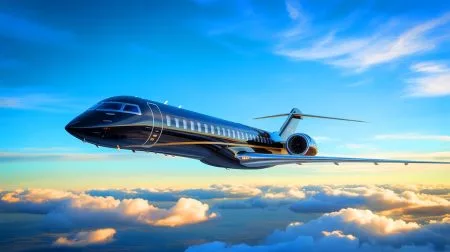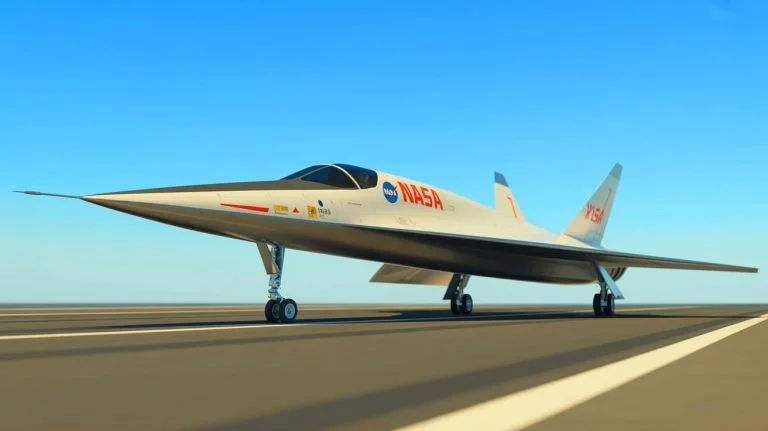| IN A NUTSHELL |
|
The world of aviation is on the brink of a revolutionary transformation, thanks to NASA’s groundbreaking work with the X-59 aircraft. Recently, the X-59 embarked on its initial taxi tests, marking a significant milestone in the journey toward achieving quiet supersonic flight. This experimental aircraft is set to redefine air travel by eliminating the disruptive sonic booms that have long been a barrier to supersonic travel over land. As NASA moves closer to the X-59’s maiden flight, the excitement and anticipation within the aerospace community continue to build.
The Significance of Taxi Tests
While it might seem mundane to outsiders, a taxi test is a critical phase in aircraft development. This process serves as the final ground-based rehearsal, ensuring that the aircraft is ready for its first flight. The primary purpose of a taxi test is to validate the aircraft’s handling, performance, and system behavior during takeoffs, landings, and ground maneuvers. Conducted at the U.S. Air Force Plant 42 in Palmdale, California, the X-59’s low-speed taxi test involved expert NASA test pilot Nils Larson. During these tests, the X-59 team closely monitored the aircraft’s steering and braking systems, ensuring stability and control.
The importance of these tests cannot be overstated. They provide engineers and flight crews with the confidence that every system is functioning as expected. Both low and high-speed taxi tests help identify any potential issues that could arise during actual flight conditions. By meticulously observing the X-59’s performance on the runway, NASA is paving the way for a successful maiden flight, where the aircraft will demonstrate its ability to fly at supersonic speeds without the typical noise pollution.
NASA’s Vision for Quiet Supersonic Flights
NASA’s ambitious goal with the X-59 is to achieve supersonic flight without the disruptive sonic boom. Traditionally, these booms have been a significant obstacle to supersonic travel over populated areas. The X-59, a key component of NASA’s Quesst mission, is engineered to transform these loud booms into a gentle “thump.” This innovation is made possible by the aircraft’s unique design, featuring an elongated nose and ultrathin wings, which work together to disperse supersonic shock waves.
Capable of cruising at Mach 1.4 (925 mph) and reaching altitudes of 55,000 feet, the X-59 aims to alter the landscape of air travel. Lockheed Martin, a major collaborator on this project, states that the aircraft will produce a sound level of just 75 decibels—comparable to the soft thud of a car door closing. This breakthrough technology holds the potential to enable commercial supersonic flights over land without disturbing communities below, heralding a new era in aviation.
The Role of Technology and Innovation
At the heart of the X-59’s development is a commitment to cutting-edge technology and innovation. The aircraft’s design is a testament to the power of engineering and scientific advancement. By addressing the sonic boom challenge, NASA is setting the stage for a future where supersonic travel is not only feasible but also environmentally considerate. This venture is a collaborative effort, drawing on the expertise of engineers, scientists, and aviation specialists who are dedicated to overcoming the hurdles of supersonic flight.
The X-59 project is more than just an aircraft; it is a symbol of what is possible when visionaries come together to solve complex problems. As NASA continues to refine and test the X-59, the lessons learned will likely influence future aircraft designs, paving the way for more sustainable and efficient air travel. The success of the X-59 could lead to broader implications for the aviation industry, potentially reshaping how we think about speed and accessibility in air travel.
Looking Ahead to Supersonic Flight
With the X-59’s taxi tests successfully underway, the anticipation for its maiden flight grows. This aircraft represents a significant step towards achieving quiet supersonic flight, a goal that could transform the aviation industry. By demonstrating that supersonic travel can be achieved without disturbing the environment, NASA is opening the door to new possibilities for commercial air travel. The X-59’s success will not only impact technological progress but also societal attitudes toward supersonic flights over populated areas.
As the world watches NASA’s progress, one can’t help but wonder about the future of aviation. How will the lessons learned from the X-59 shape the next generation of aircraft? Will this technology become a standard in commercial flights, offering passengers faster travel times while maintaining environmental responsibility? The answers lie in the skies ahead, as NASA continues to push the boundaries of what is possible in aviation.
Did you like it? 4.6/5 (29)






How does NASA plan to address privacy issues with the X-59’s supersonic flights? 🤔
Is it just me, or does the idea of a “quiet” sonic boom sound like an oxymoron?
Thank you for the insightful article! I’m excited to see where this technology leads us. 🚀
Are there any health concerns associated with these supersonic flights over populated areas?
Will these “thumps” still be audible inside homes? I’m a bit skeptical. 🤔
Is the X-59 going to shatter the laws of physics or just bend them a little?
This is an incredible advancement in aviation technology! Can’t wait to fly supersonic. ✈️
With privacy concerns rising, how will data from these flights be managed?
Does anyone know how long it will take to complete a flight from New York to LA in the X-59?
Only a few minutes, an hour at the most. The only drawback will that people getting off the planes will look Asian as the g forces of the flight pushes their facial skin back, but after an hour or two those side effects vanish. Can’t wait to try em out!
So is this the future of air travel or just a fancy prototype? Time will tell. ⏳
What happens if there’s a supersonic traffic jam? Just curious! 😊
Thanks for the update! Looking forward to hearing more about the X-59’s first flight.
Transforming sonic booms into “thumps”? Sounds like magic to me!
How does the X-59 compare to existing aircraft in terms of fuel efficiency?
I appreciate the environmental focus of this project. Let’s hope it delivers on its promises. 🌱
Why do these technological advancements always take so long to reach the public?
This feels like science fiction becoming reality. Amazing work by NASA and Lockheed Martin!
The elongated nose looks like a dolphin’s beak to me! 🐬
What measures are in place to ensure the safety of these new supersonic flights?
Can’t wait for the day when flying supersonic is as common as flying economy. 🤞
Why push supersonic travel when we should focus on making air travel more sustainable?
Hey China, wanna steal this technology too? Asking for a friend…
This is a giant leap for aviation but is it really practical for everyday use?
Will there be a supersonic class on commercial flights, and will it cost more?
Hopefully, this tech will trickle down to passenger jets sooner rather than later. ⏩
What kind of training do pilots need to fly the X-59?
Does anyone else find it ironic that a jet designed for silence is causing such a loud debate?
Is there any potential for the X-59 technology to be used in military applications?
How can they ensure that this doesn’t disturb wildlife in the areas it flies over?
I hope they don’t forget to include a good in-flight movie selection on the X-59! 🎥
Love seeing NASA innovate beyond space exploration! Keep up the good work. 🌟
Is it true that the X-59 could be quieter than most current commercial jets? 😮
Will the X-59 be available for commercial travel anytime soon?
How is this different from the Concorde, which was also supersonic but had to stop?
I wonder how much a ticket for a supersonic flight might cost. Any estimates?
Does anyone else think NASA should focus more on space exploration rather than supersonic jets?
Great article! I’m thrilled about the potential environmental benefits of the X-59. 🌍